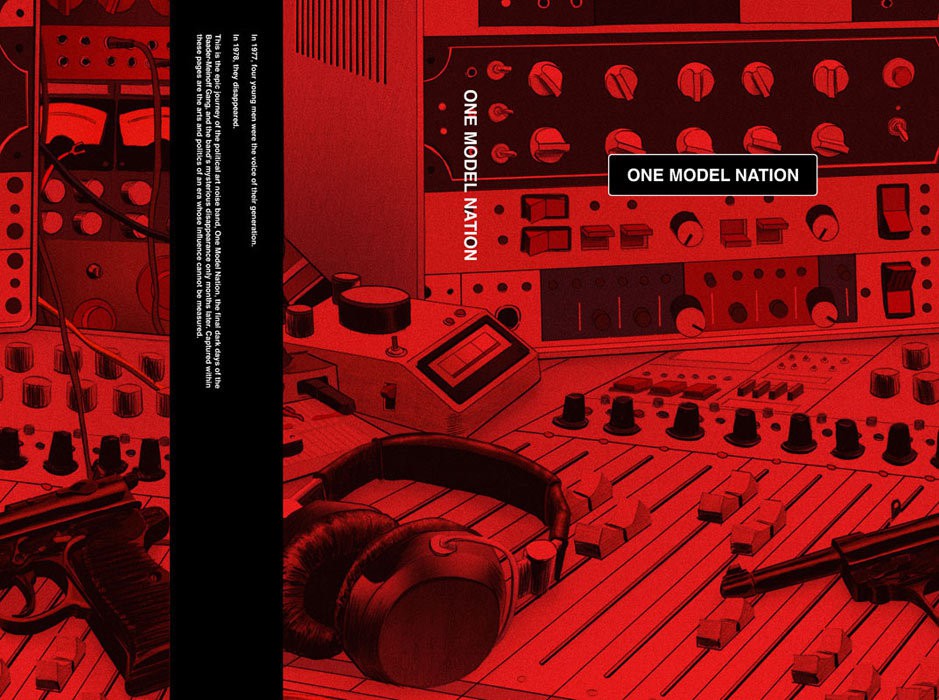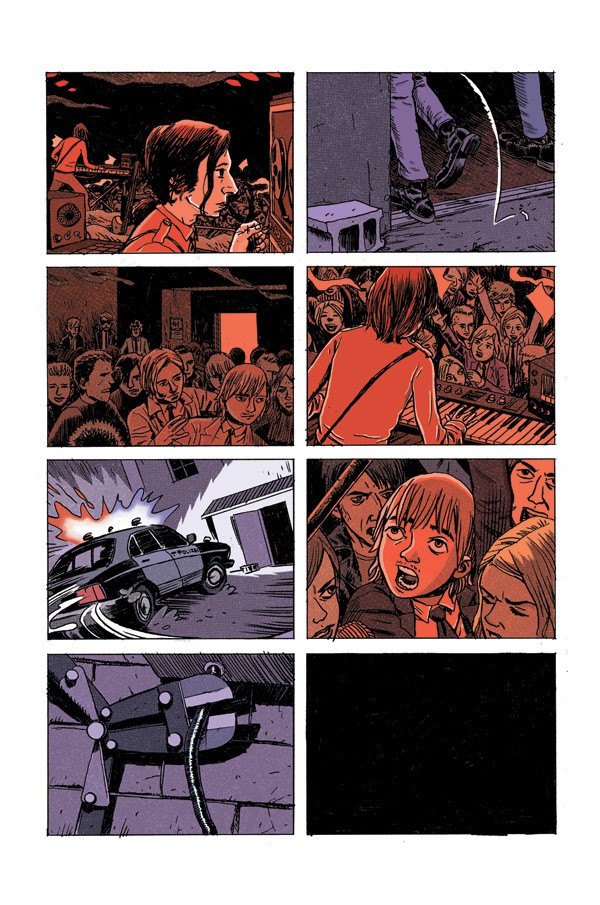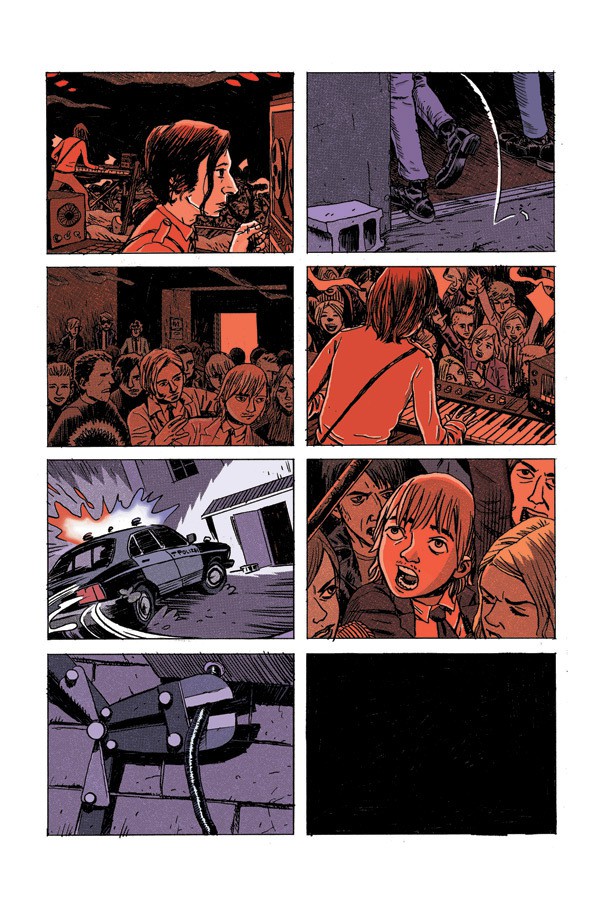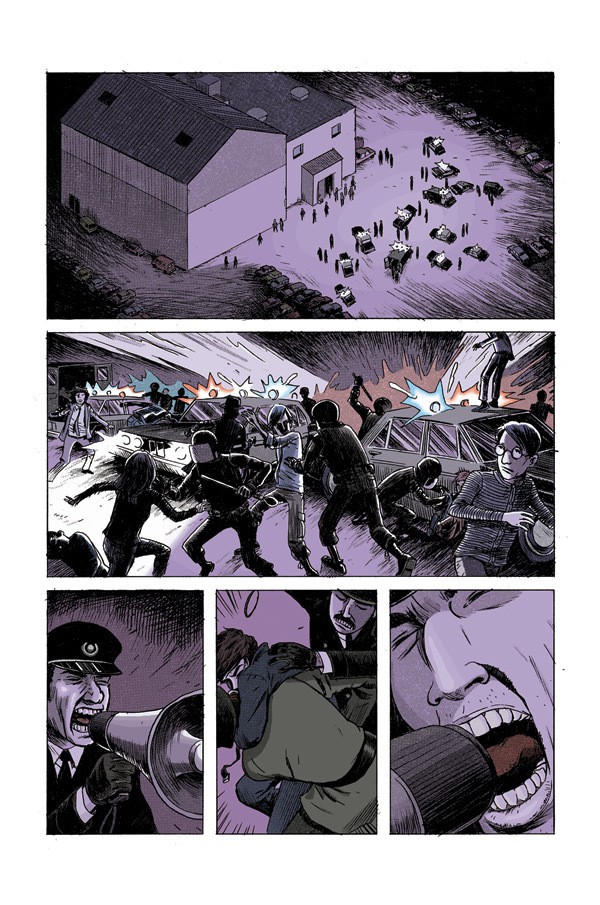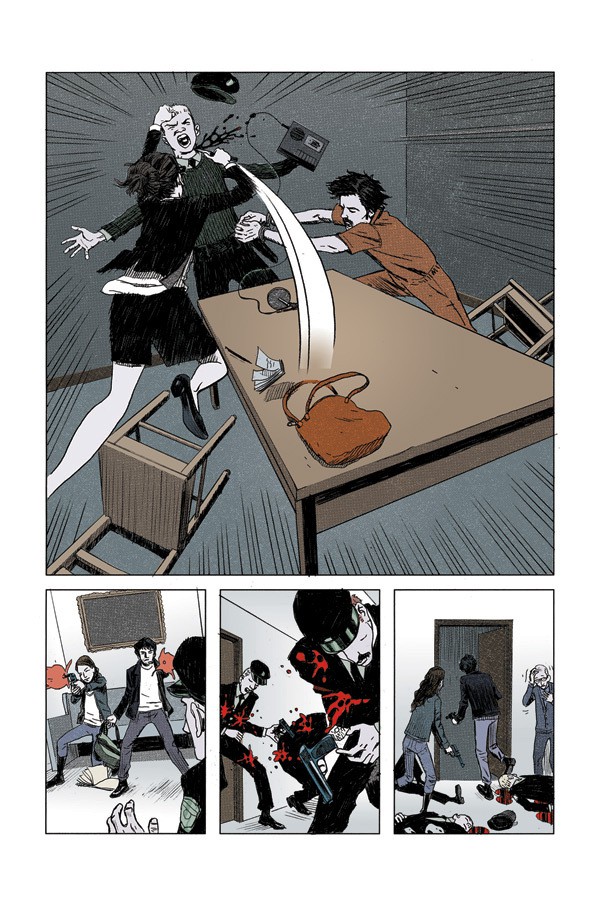Comic books and music often come together in strange, blind date sort of situations that feel forced and unwholesome. It’s hard to believe that your favorite arena rock star (ala Gene Simmons or Ozzy Osbourne) will suddenly save the world using the power of ROCK.
One Model Nation, by C. Allbritton Taylor and Donovan Leitch, is an entirely different animal. The graphic novel is a work of historical fiction that follows a group of musicians living in one of the most intriguing hotbeds of musical innovation in the past century: late 1970s Germany. One Model Nation were a band that rubbed elbows with the likes of Kraftwerk and Bowie, and they vanished suddenly and completely under mysterious circumstances. Fascinated by their story, C. Allbritton Taylor (Dandy Warhols) and Donovan Leitch (Camp Freddy) embarked on a creative process that lasted nearly a decade. They delved into the turbulent political climate of post-World War II Germany, and found a story that was ripe for the telling — one about music, politics, and the power a band can have over the youth of a nation without even trying.
Related Posts
Donovan Leitch explains, “Much of the story is pieced together through various actual events that took place — stories about the Baader Meinhof Gang, as well as many bands that were around. Kraftwerk were the most well known, but there were certainly many other bands like One Model Nation.”
In the novel, One Model Nation is erroneously associated with the infamous Baader Meinhof Gang as the result of some terrible press. The band’s fanbase contained young people that sympathized with the Red Army Faction and their anti-government stance, but OMN seemed indifferent, like they couldn’t care less about the politics that surrounded them.
“They were musicians who just wanted to make music,” Leitch says. “They thought the Baader Meinhof Gang were disgusting cretins and the government were not much better.”
The German government had created a climate of fear that the youth of the nation were fed up with. After the rise of the Baader Meinhof Gang, young people were singled out as enemies of the state, reminiscent of the situation many Muslims face in America today.
“There were wanted posters that were everywhere — every city and town in Germany, with about 20 faces of young adults. This created an air of hysteria, and anyone under the age of 25 were automatically assumed to be terrorists,” Leitch explains.
“The country was not unified. After World War II, Germany was prevented from becoming a superpower, so there was no federal authority. If you were a terrorist, you could blow up a bank in Hamburg, then drive to Frankfurt and change your identity without anyone ever catching on. Then it was the Secret Police, the Stazi, who were formed to root out the terrorists with shoot to kill orders handed down from a very nebulous leadership.”
Dealing with political turmoil is only made more difficult when there’s sensationalist press running about, pushing all the wrong buttons. One Model Nation was demonized by the press as RAF supporters — these false reports brought violence to their door, and to their shows, getting them in trouble with the law. I asked C. Allbritton Taylor how he would compare the mainstream American media with that of post-World War II Germany. Did he think things had gotten better, worse, or were they the same?
“Funny enough, while editing for graphic novel form I removed some dialogue in the beginning about just that. The Olaf Arte character says that the media are just the same now — and I truly believe it,” Taylor explains. “Reading the Greeks, the Russians, Dickens, and Burroughs should make it pretty clear that people as a whole don’t change. People can change, but ‘people’ can’t. There are still people trying to do noble things through media and there are sad little people chasing power through the media at a terrible cost to good and decent people. A person can change from one to the other, but there will always be both. We can’t change as a whole — only individuals can do that.”
Taylor can sympathize with the band — he’s had some less than pleasant encounters with the press himself.
“It became clear that when people not only write, but even just talk about other people, they are actually talking about themselves. This is where the mean writers come from — they are working out their own problems publicly but substituting other people’s names. I once had a very nice lunch with a journalist who then wrote that I seemed like ‘the kind of guy who would be nice to your face, but talk bad about you behind your back.’ Ironic?”
Taylor considers One Model Nation his life’s work — he’s been working on the project for almost 10 years. Far from a whimsical endeavor, Taylor took his time, shaping the story into a solid, substantial tale that is as vital and valid now as it was at the time that it originally happened.
“It took about two years to write, and then another eight to make it good. Being a good writer, apparently, is rather difficult. One must write from the heart, but then edit with the head, with long gaps in between — long enough to forget what you’ve written so that one feels like the editor of someone else’s book. People are such accurate critics for the work of others, you know.”
When the time came to work with an artist on the novel, Leitch and Taylor managed to lure in Jim Rugg, famous for his work on Street Angel and Afrodisiac. The look of the comic is dark and slightly pale, with sharp lines contrasting the murky hues of crimson, grey, and black that permeate the illustrations. Taylor collaborated with Rugg to get the look he was going for.
“I used words like, stoic, formidable, dark, inky, grey, rainy, etc. He did a couple different line styles and he found this cross between maybe David Choe, and I guess Afrodisiac. I knew exactly what I wanted it to look like, so once we got that down pat he just started going to town,” Taylor recalls.
There were exceptional, stand-out cells on many of the pages of the band performing, of landscapes, and of the youth of the nation. One gorgeous cell spans two pages, displaying the swirling winds of government helicopters as they hover over a concert.
“Keeping [Rugg] confined to traditional layout made his acrobatics, like the helicopter scene, more pronounced and explosive. He’s such an experienced storyteller and an amazing cinematographer, that once we got to page breakdowns it was really just details of the different locales (London, Amsterdam, Berlin, etc.) that I needed to watch for. The rest was just ‘wind him up and let him go.’”
The sweeping, cinematic quality of the novel is no coincidence. Plans are in the works to make a moving picture leap from the pages. Leitch and Taylor planned on releasing One Model Nation as a fictional film, and still intend to do so. Perhaps David Bowie will make a cameo in the film, like he did in the graphic novel? Maybe actual archival material from One Model Nation will appear on the soundtrack? I don’t know about you — but I can’t wait.
